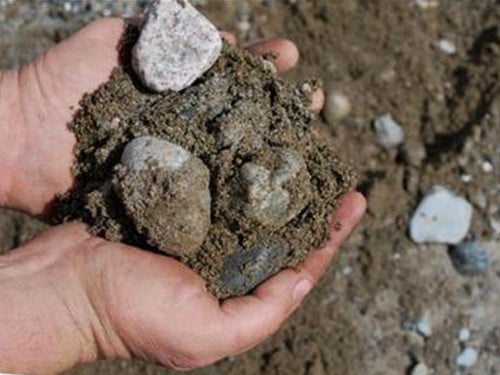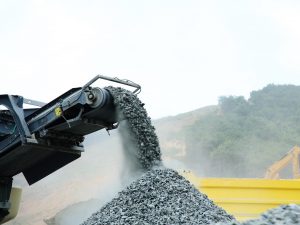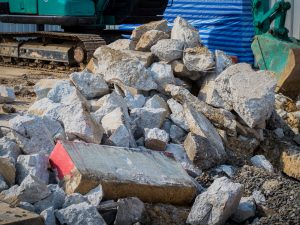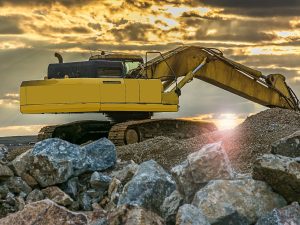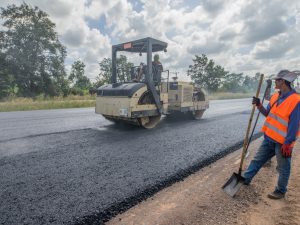What Is Bank Run Gravel?
What comprises bank run gravel is dirt, rocks, sand, silt, and other gravel particles. Customers can choose fine, medium, or coarse bank run gravel. The largest stones in this mix are about 2 inches long. This type of gravel works well when it is compacted. The different size particles bond together well. Therefore, it will not erode or blow around easily.
How Is It Used?
We use bank run gravel in a variety of road, construction, and landscaping projects. Its strength and durability make it a top choice as a sub-base for roads and driveways. It also helps in laying down pavers because it will hold them securely in place.
4 Popular Uses for Bank Run Gravel
- Bank run works well as fill sand, often used to backfill trenches. Bank run will give a firm foundation for any building project. Bank run is also affordable enough to be used in bulk if there is a large area to be filled.
- Bank run sand is often used for railroad construction projects. It improves the traction of train wheels. Doing this minimizes damage to both the wheels and the tracks. So, it improves the safety and longevity of railroads.
- Many use it as backfill for lines and equipment. It compacts well and is resistant to erosion, reducing the chances of septic and utility lines from damage.
- Homeowners may choose bank run gravel as decorative filler for walkways and driveways. It is a better choice than soil because it doesn’t move. Instead, it acts like any other crushed stone to create a neat yet durable design.
Contact ReAgg for hauling and delivery of Baltimore bank run gravel or sand. Call us at (301) 336-6700 or toll free at (888) 554-1503 for aggregates delivery in the Baltimore, Maryland, and Metropolitan area, Washington DC and Northern Virginia.




